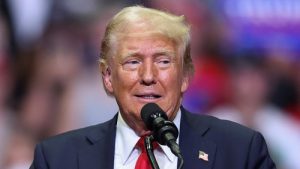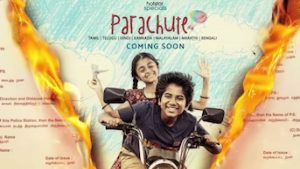US inflation eased to 3.2% in October, sparking bets that Fed is done hiking rates
US inflation rose 3.2% in October — a slightly lower-than-expected number that gave relief to investors and raised hopes the Federal Reserve could done with its rate-hiking campaign.
The Consumer Price Index which tracks changes in the costs of everyday goods and services decelerated from the September’s 3.7% advance and was a tick below the 3.3% gain economists had expected, according to data by the Bureau of Labor Statistics released Tuesday.
Although still uncomfortably above the Federal Reserve’s 2% target, it was the first time since June that inflation had slowed month-over-month as gasoline prices eased and increases in housing costs slowed and stirred hopes that prices are finally headed in the right direction.
Stocks — which dropped last week after Fed Chairman Jerome Powell signaled the central bank wouldn’t be “misled by a few months of good data” as it stayed vigilant on prices — surged, with the Dow closing up nearly 500 points, or 1.4%.
The bar for further rate hikes is getting higher and higher, Wells Fargo’s chief economist Jay Bryson said on Bloomberg TV after Tuesdays report. This is a good start in that journey, but you would need to see a few more months of 0.2 before saying mission accomplished.
The shelter index that tracks housing costs rose 0.3%, the federal agency said Tuesday. While that offset a decline in the gasoline index and accounted for the majority of the CPI’s advance, it was half the pace of the prior month.
On a monthly basis, consumer prices remained unchanged at 0.4%, attributed to a 5% decline in the gasoline index.
As of Tuesday, a gallon of gas in the US averages $3.35, according to AAA, down from the $3.65 average price per gallon when September’s CPI report was released, and the $3.85 the month prior.
Core CPI a number that excludes volatile food and energy prices and serves as a closely watched gauge among policymakers for long-term trends increased to 0.3% in October, a 4.0% advance from a year ago .
Though October’s CPI report trends positively towards the Fed’s 2% inflation target, it doesn’t confirm whether the Fed is likely to push interest rates beyond their current range — between 5.25% and 5.5% — following their December policy meeting, set to take place Dec. 12 to Dec. 13.
Fed Chair Jerome Powell has kept the door open for another hike, reiterating during a hawkish speech at the International Monetary Funds policy panel in Washington, DC, last week: If it becomes appropriate to tighten policy further, we will not hesitate to do so.”
We will keep at it until the job is done, Powell added of the Feds 2% inflation goal, which the US economy hasnt seen since 2012.
Meanwhile, the CME FedWatch Tool projects a more than than 85% chance that the Fed doesn’t raise rates again this year — up from a 54% chance a month ago.
For months now central bankers have mulled one addition 25 basis point-hike before year’s end in hopes of an economic slowdown, and economists have been divided on what the Fed’s next move is.
Economists expected that the Fed was leaning towards another rate hike after a blowout September jobs report that said the US economy added 336,000 jobs during the month.
However, October’s 150,000 payroll gains showed that September’s surge in jobs was only temporary.






